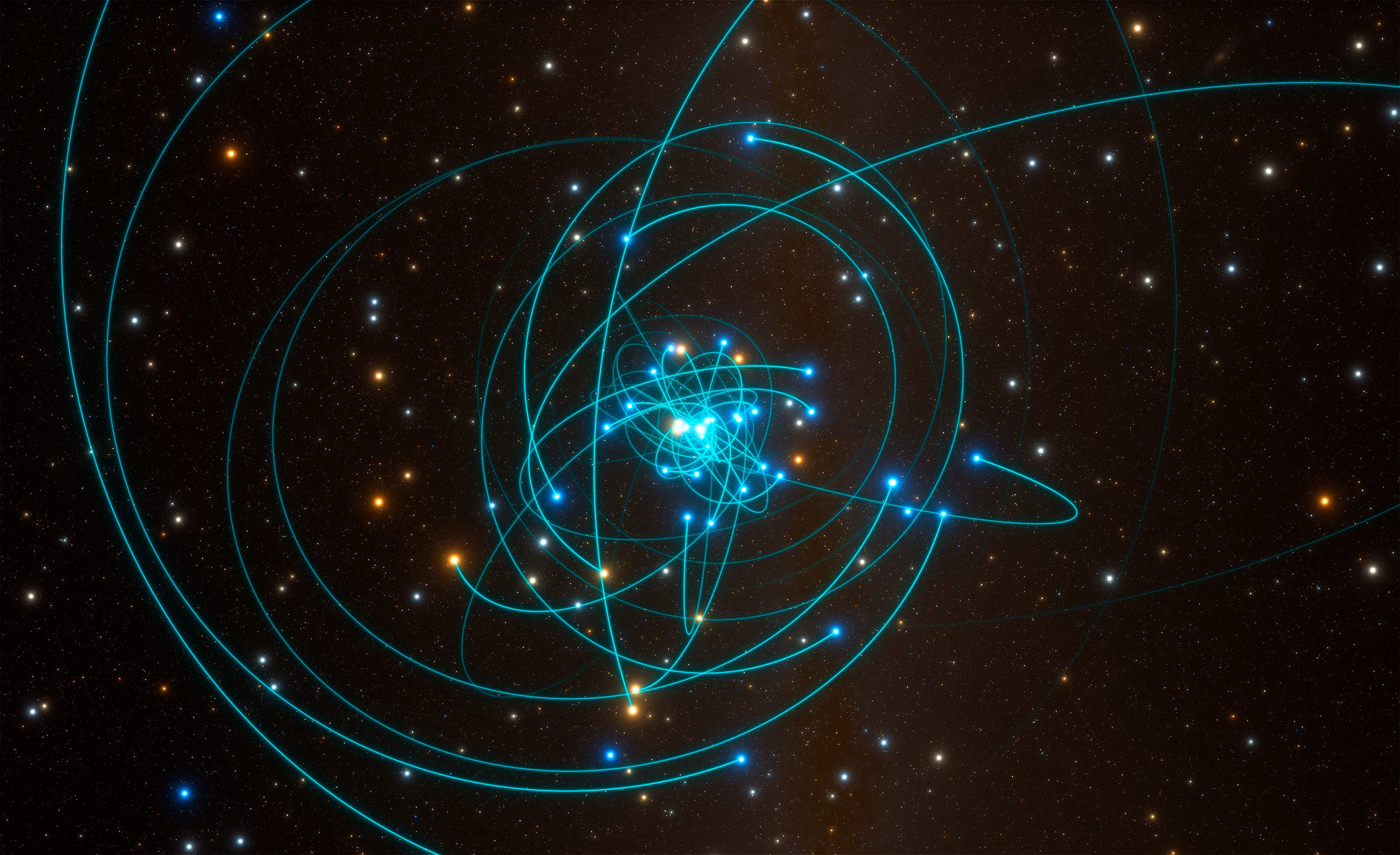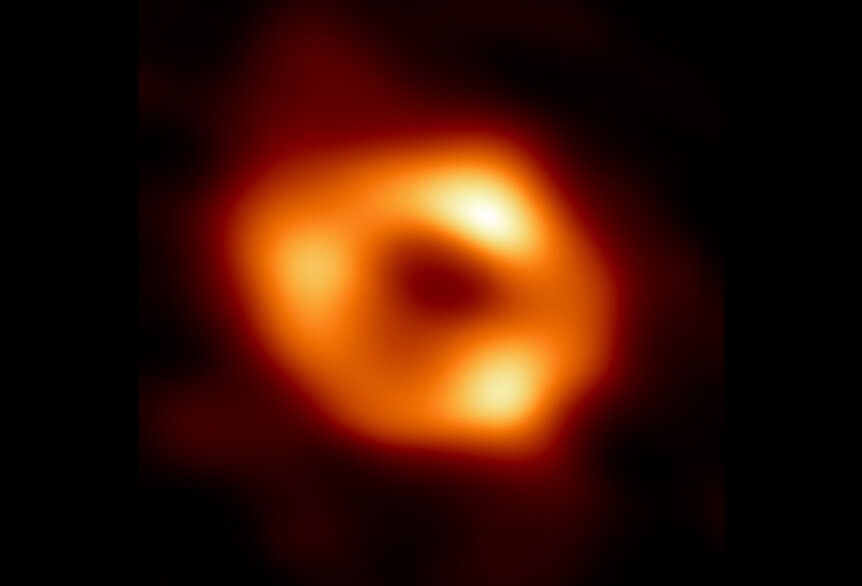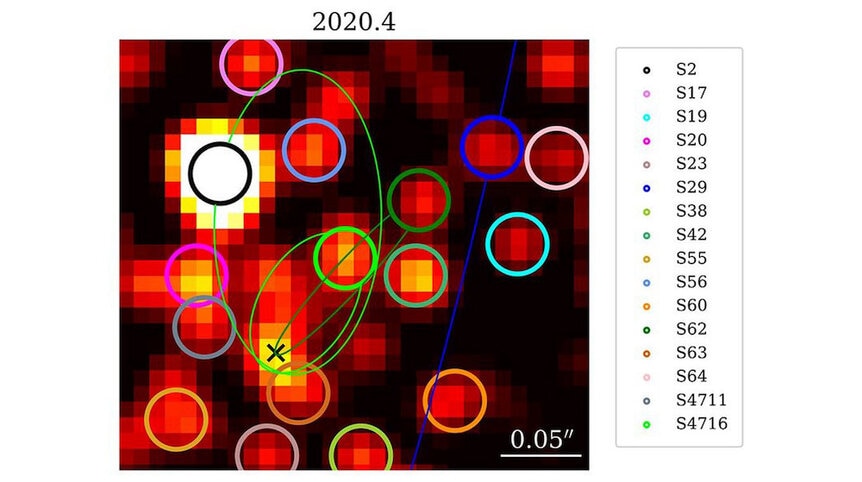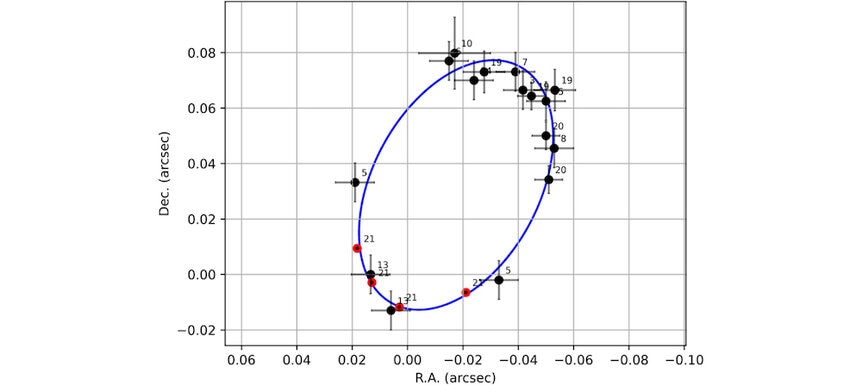Create a free profile to get unlimited access to exclusive videos, sweepstakes, and more!
Newly discovered star takes just four years to orbit Sgr A*, our local supermassive black hole
The star S4716 has the shortest known orbital period around Sgr A*.

A star has been found with the shortest known orbit around Sgr A*, the supermassive black hole in the center of our galaxy: It takes just four years to orbit the behemoth once.
The star, called S4716, is part of a cluster of massive stars only discovered relatively recently centered on the black hole in the Milky Way’s heart. Over time, as these stars move in their orbits, their positions can be measured to determine their orbits, and from there key characteristics of the black hole itself can be found.
Sgr A*, you may recall, was the subject of a recent series of observations using radio telescopes across the world to get an image of the matter in an accretion disk swirling around it. That material is only about 60 million kilometers from the black hole — not much farther than Mercury is from the Sun. The stars in the cluster, however, are many billions of kilometers from it at their closest, and range as far as about a tenth of a light year out, or roughly a trillion kilometers.
The individual stars in the S Cluster, as it’s called, are hard to observe for many reasons. One is simply due to how close they are together and how far they are from Earth. Even with our biggest telescopes the stars can appear to overlap, causing confusion. There’s also a lot of dust swirling around in the galactic center, dimming the view. That’s why astronomers tend to use telescopes designed to see in infrared light, which can penetrate the dust and give us a clearer view. Even then, observations like these are hard.
Making things worse is S2, the brightest star in the cluster, which tends to swamp the light of nearby stars. So finding stars that are fainter and close to the black hole is tough.
Using various cameras on the immense Keck and Very Large Telescopes, a team of astronomers looked at data taken over the past two decades of Sgr A* [link to paper]. Using sophisticated techniques to clean and sharpen the images, they see a previously undiscovered star they call S4716 in images taken over 16 different observation periods. The star can be seen to move around the black hole on a decently elliptical orbit (with an eccentricity of about 0.75 for you geometry nerds) with a period of about 4 years.
It passes as close as 1.5 billion kilometers from Sgr A*, which is pretty close — about the distance of Saturn from the Sun — and gets about 10 billion kilometers out at its farthest, which is roughly twice the distance of Neptune from the Sun.
Given the huge gravity of the black hole, that means the star moves at a staggering 28 million kilometers per hour at closest approach: That’s 2.6% the speed of light. Yegads.
Amazingly, that’s actually not the fastest star orbiting Sgr A*! A star found a few years ago, called S4714, is on a very elliptical orbit that accelerates it to a speed of about 85 million km/hr, or 8% the speed of light. That star’s orbit stretches very long, taking it much farther out from the black hole, and its period is more like 12 years long. So, for the moment, S4716 holds the record for shortest and most compact orbit of any star around Sgr A*.
S4716 is a big star, about four times the mass of the Sun and some 130 times as luminous; good thing or it would be impossible to spot. Its orbit depends on the mass of the black hole and its distance, so using the centuries-old equations for orbital motion they can calculate the mass of Sgr A*, and get a value of 4.023 ± 0.087 million times the Sun’s mass, which is in line with previous measurements.
They can also get the distance to the black hole, and find it to be 26,170 ± 650 light-years from us. That too is consistent with previous measurements. That’s nice to know. And these numbers are one reason astronomers are eager to spot these stars, as they can constrain what we know about the black hole.
The S Cluster itself is a mystery, too. It’s not clear how it formed, since gas that close to the black hole would be heated too much to collapse and form massive stars. It’s likely they formed farther out and dropped in closer to Sgr A* through close gravitational encounters with other stars, a process called mass segregation. The more stars found and analyzed in the cluster, the better we’ll understand its history.
Observations like these are on the bleeding edge of what can currently be done. It’s possible JWST will be able to help here; as an infrared telescope it can see past the dust, and its sharp vision may help with separating the mess of stars swirling in the galactic core.
The Milky Way’s center is maelstrom of gas, dust, stars, powerful magnetic fields, and of course a monster black hole right at the very heart of it all. But, with persistence and patience, order is being teased out of the chaos.





























